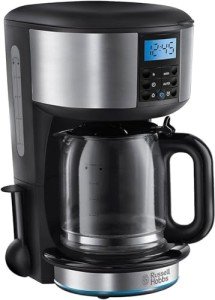7 Tricks To Help Make The Most Of Your Coffee Brewers
The Rise and Reign of Coffee Brewers: A Comprehensive Guide to Brewing Perfection
Coffee is more than simply a drink; it's a ritual that many around the globe cherish. Whether it's the first cup to kickstart the day or a mid-afternoon pick-me-up, the approach of preparation greatly influences the taste and overall experience of coffee. Coffee brewers have actually progressed substantially for many years, from traditional drip machines to sophisticated espresso makers, making it important for coffee enthusiasts to comprehend the numerous types readily available and their distinct advantages.
The Evolution of Coffee Brewing Methods
Coffee brewing has an abundant history that spans centuries. The technique used often reflects cultural customs and improvements in technology. Here, we will explore some of the most prominent coffee brewing techniques, their benefits and drawbacks, and which type of brewer might suit different lifestyles and preferences.
1. Drip Coffee Makers
The drip coffee machine is one of the most popular developing methods, especially in families and offices.
Pros:
- Simple to utilize: Just include water and coffee premises.
- Suitable for brewing numerous cups at when.
- Consistent taste with automatic temperature level control.
Cons:
- Limited control over brewing time and temperature level.
- Typically needs filtered coffee, which some may discover restricting.
2. French Press
The French press, also known as a press pot or plunger pot, is preferred by many for its abundant taste extraction.
Pros:
- Allows for total control over brewing time.
- Produces a thick and flavorful cup of coffee.
- No requirement for paper filters, which is eco-friendly.
Cons:
- Requires more manual effort than automatic machines.
- Can lead to sediment in the bottom of the cup.
3. Espresso Machines
Espresso machines range from manual to completely automated systems created to produce focused coffee shots.
Pros:
- Versatile: Can make espresso, cappuccinos, lattes, and more.
- Creates abundant, bold flavors and a silky crema.
Cons:
- Typically more expensive and requires more understanding to operate.
- Cleaning and upkeep can be more complex.
4. Pour-Over Coffee Makers
Pour-over approaches like the Chemex and Hario V60 have gained traction for their ability to brew a clean and fragrant cup.
Pros:
- Provides excellent control over the developing procedure.
- High-quality taste extraction when done properly.
Cons:
- Time-consuming and needs ability to perfect.
- Not ideal for producing large quantities.
5. Cold Brew Coffee Makers
Cold brew is made by soaking coarsely ground coffee in cold water, producing a smooth, less acidic drink.
Pros:
- Smooth and revitalizing, with lower level of acidity compared to hot brew.
- Can be made in large batches and kept for days.
Cons:
- Requires innovative preparation, as steeping can take 12 to 24 hours.
- Some may dislike the distinct flavor profile.
Developing Method
Pros
Cons
Drip Coffee Maker
Easy, brews numerous cups
Minimal control
French Press
Complete control, rich taste
Manual effort required
Espresso Machine
Versatile, rich flavors
Greater cost and complexity
Pour-Over
Excellent control, high-quality flavor
Lengthy, skill-dependent
Cold Brew
Smooth, low acidity
Long developing time, unique taste profile
Selecting the Right Coffee Brewer
When choosing a coffee brewer, a number of aspects should be thought about:
Brew Size: How many cups do you usually make at the same time? For those developing for a crowd, a drip coffee maker or a larger French press might be appropriate.
Time Commitment: How much time are you going to dedicate to brewing? If time is of the essence, automatic machines may be preferable.
Taste Preferences: Do you take pleasure in intricate flavors and boldness? An espresso machine or pour-over technique may be ideal.
Budget: High-quality coffee machines can range considerably in cost, so identifying your budget plan will narrow down choices.
Space: Consider the countertop area readily available in your kitchen area, as some brewers can be quite large.
Frequently Asked Questions About Coffee Brewers
1. How do I clean my coffee brewer?
The majority of coffee makers have specific cleansing instructions in their handbooks, but easy techniques consist of:
- For drip coffee machine: Run a service of vinegar and water through the brew cycle followed by clean water.
- For French presses: Disassemble the plunger and clean it under hot water utilizing a soft sponge.
2. How frequently should I replace my coffee maker?
Typically, coffee machine can last anywhere from 5 to 10 years with correct care. If you see a decrease in the flavor of your coffee or consistent issues with functionality, it may be time for a replacement.
3. Can Coffeee use regular coffee with an espresso machine?
Yes, you can use routine coffee, but it will not yield the same concentrated taste profile as utilizing espresso roast coffee particularly created for such machines.
4. What is the best coffee-to-water ratio for developing?
A basic guideline is the “Golden Ratio” of 1:16, which is one part coffee to 16 parts water, however experimentation may lead you to your individual preference.
5. Are costly coffee machine worth it?
Higher-end coffee machine frequently have much better construct quality, more features, and provide better flavor control. However, “worth it” can be subjective based on private needs and budget plan.
The range of coffee brewers offered today enables lovers to check out and try out flavors, techniques, and developing times, making every cup a distinct experience. Whether choosing an easy drip machine or mastering the art of espresso developing, the journey of creating the best cup of coffee continues to progress. By understanding the various brewing methods and their qualities, individuals can make educated decisions that boost their everyday coffee routine and gratitude. After all, the best brewer can make all the distinction in delighting in that much-loved cup of joe.
